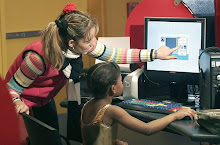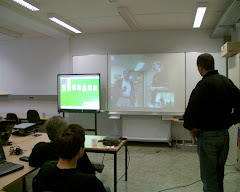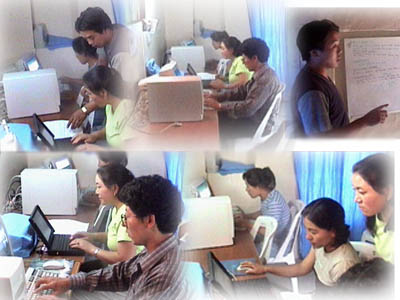The module must include;
1. an introduction;
2. selected objectives from the list provided (please do not attempt to do them all, maximum three);
3. online resources including selected readings or web sites;
4. a series of instructional activities;
5. an assignment based on the resources and activity including an evaluation rubric or template;
6. three discussion forum questions;
7. a focus question for the weekly chat session
Evaluation criteria:
(1)
IntroductionThe degree to which the introduction explained the content, provided an overview of the module, and stimulated interest in the module.
The introduction provided a vague explanation of the content, provided a brief overview of the module, and did not stimulate interest in the module.
The introduction provided a brief explanation of the content, provided an overview of the module, and provided an interesting anecdote to introduce the module.
The introduction provided a brief explanation of the content, provided an overview of the module, and stimulated the reader to find out more about the module.
The introduction provided a thorough explanation of the content, provided a complete overview of the module, and provided an interesting anecdote to introduce the module.
(2)
ResourcesThe use and application of both full-text and multimedia resources.
No use of full text resources and no use of multimedia resources.
Minimal use of full text resources and minimal use of multimedia resources.
Effective use of full text resources and effective use of multimedia resources.
Exemplary use of full text resources and incorporation of new full text and/or multimedia resources.
(3)
Active LearningThe level and type of activities promoted through the content module tasks.
Knowledge and comprehension involving the recall of information or knowledge of major ideas.
Analysis, involving seeing patterns, recognition of hidden meanings, or identification of components.
Synthesis, involving the translation of knowledge into a new context.
Evaluation, involving the discrimination and comparison between ideas or assessing the value of theories or presentations.
(4)
InteractivityThe degree to which students were encouraged to interact with each other, with the content, and with the design team.
Minimal interaction promoted between students, content, and design team.
Some interaction promoted between students, content, and design team.
Extensive interaction promoted between students, content, and design team.
High degree of interaction promoted between students, content, and design team.
(5) Activities
The degree to which the activities in the module encouraged higher order thinking skills, were interactive and engaging, and their relationship to the objectives were clearly described.
No development of higher order thinking skills, no activities engaged the students, and there was no relationship between the objectives, activities and resources provided.
Thinking skills directed at knowledge acquisition, some activities engaged the students, and there was a minimal relationship between the objectives, activities and resources provided.
Development of higher order thinking skills, all activities engaged the students, and there was a clear and direct relationship between the objectives, activities and resources provided.
Development of higher order thinking skills, students encouraged to produce knowledge, and there was a clear and direct relationship between the objectives, activities and resources provided.
(6)
AssignmentThe degree to which the assignment was related to the objectives and activities, encouraged students to locate, synthesize and present information, and extended the students learning.
The assignment was marginally related to the objectives and activities, promoted location of resources only, and did not extend the students learning.
The assignment was related to the objectives and activities, promoted comparison or evaluation of resources, and extended the students learning.
The assignment was related to the objectives and activities, promoted synthesis of resources, and encouraged the students to accommodate the new knowledge with their own experience.
The assignment was related to the objectives and activities, was stimulating, interesting and creative, promoted presentation of resources, and stimulated students to create new knowledge.
(7)
EvaluationThe degree to which the evaluation scheme was clear, consistent with the objectives and instructional strategy utilized.
The evaluation scheme was vague and unclear, and was inconsistent with the objectives and instructional strategy utilized.
The evaluation scheme was clear and consistent with the objectives and instructional strategy utilized.
The evaluation scheme was clear and well described, consistent with the objectives and instructional strategy utilized, and showed evidence of incorporating research.
The evaluation scheme was clear and well described, consistent with the objectives and instructional strategy utilized, and showed evidence of creativity in its approach.
Total Design of Content Module Score: __ / 60
Delivery of Content ModuleCategory
(1)Poor
(2)Satisfactory
(3) Good
(4) Excellent
Monitor discussion questions
The number of times your team responded to the discussion items posted.
Our team responded to the discussion items posted less than 10 times.
Our team responded to the discussion items posted between 11 and 20 times.
Our team responded to the discussion items posted between 21 and 30 times.
Our team responded to the discussion items posted more than 30 times.
Synthesize conclusionThe degree to which our team synthesized and summarized both the discussion forum postings as well as the chat sessions dialogues in relation to the objectives of the module.
Our team did not synthesize and summarize both the discussion forum postings as well as the chat sessions dialogues.
The synthesis and summary of both the discussion forum postings as well as the chat sessions dialogues were vague and marginally related to the objectives of the content module.
The synthesis and summary of both the discussion forum postings as well as the chat sessions dialogues was complete and directly related to the objectives of the content module.
The synthesis and summary of both the discussion forum postings as well as the chat sessions dialogues was comprehensive and totally related to the objectives of the content module.
Total Delivery of Content Module Score: __ / 16
Personal RoleCategory
1. Poor
2. Satisfactory
3. Good
4. Excellent
Self-EvaluationYour contribution to groupThe degree to which you were personally involved in the design, development and delivery of the content module.
Your thoughts, experiences and knowledge were marginally incorporated into the design, development and delivery of the content module.
Your thoughts, experiences and knowledge were included in the design, development and delivery of the content module.
You thought about how you could contribute to the content module and it was proposed, negotiated and accepted by the team.
You took a leadership role in the design, development and delivery of your group’s module.
Total Personal Role Score: ___ / 8
Overall Impression 1. Poor
2. Satisfactory
3. Good
4. Excellent
Instructor Evaluation:Overall, the design, development and delivery process of your team’s content module demonstrated a minimal level of effort, creativity, knowledge and application of skills.
Overall, the design, development and delivery process of your team’s content module demonstrated an acceptable level of effort, creativity, knowledge and application of skills.
Overall, the design, development and delivery process of your team’s content module demonstrated a superior level of effort, creativity, knowledge and application of skills.
Overall, the design, development and delivery process of your team’s content module demonstrated an exceptional level of effort, creativity, knowledge and application of skills.
Total Overall Impression Score: ___ / 16
Total Score:
Comments:Source:
http://www.uregina.ca/cce/offcampus/distance/schedules/S08_courses.htm


















